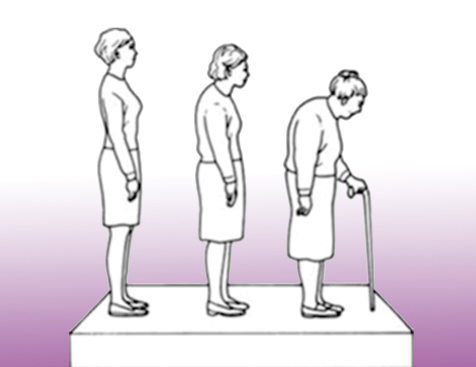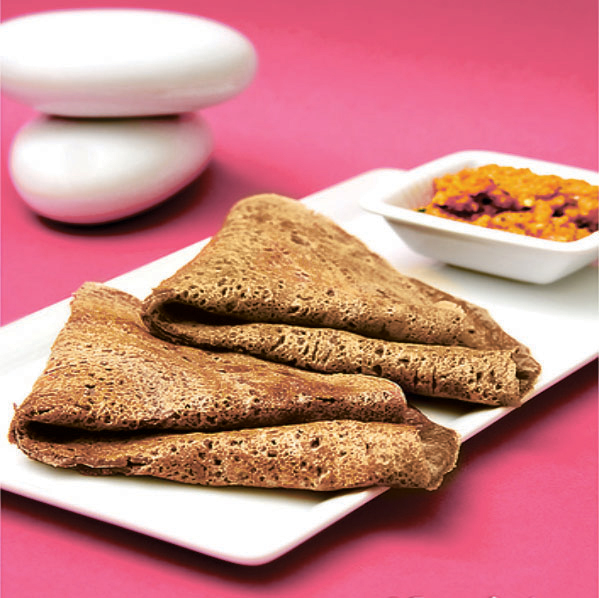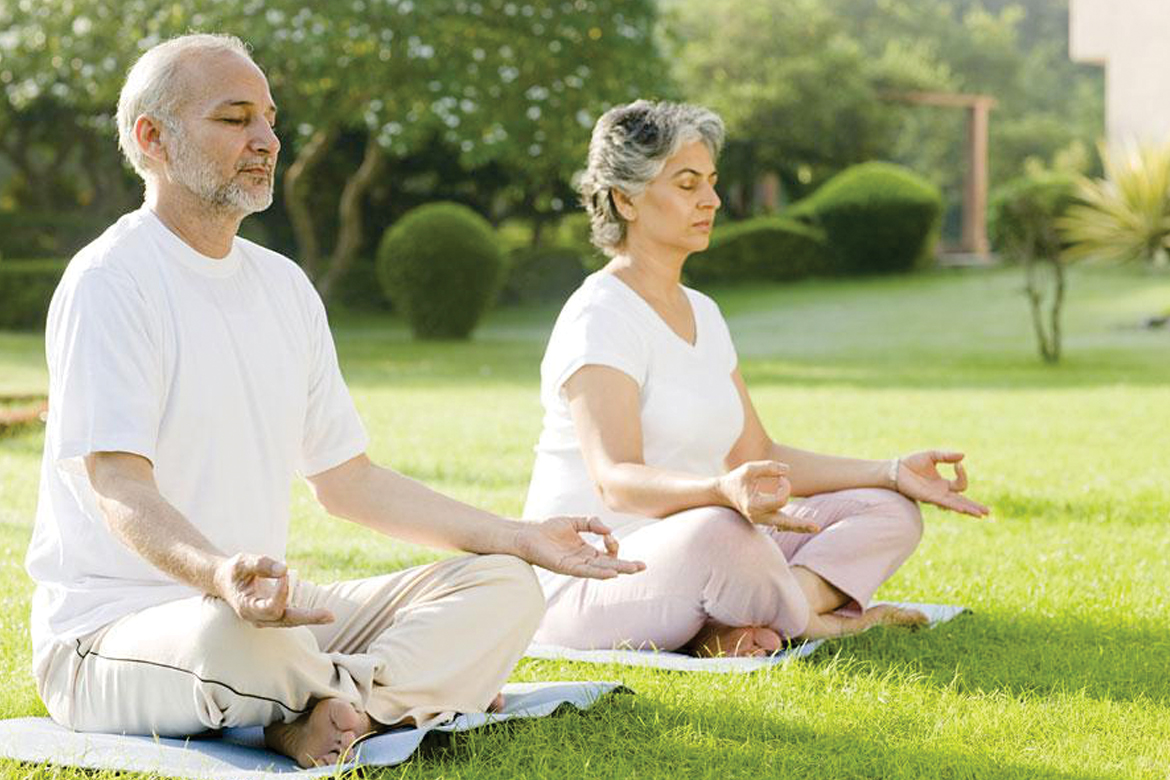Osteoporosis, a common yet neglected condition, affects one in three women and one in five men over the age of fifty.However,this bone disorder can strike a person at any age.A quick glance on this global problem and its consequences…
Osteoporosis, which literally means ‘porous bone’, is a disease in which the bone mass and bone strength are reduced. As we get older, we are no longer able to replace bone tissue as quickly as we lose it. Osteoporosis occurs when new bone formation does not match the bone loss. If not prevented or left untreated, the loss of bone occurs ‘silently’ and progressively. This reduces the density of bone, making them weak and easy to break, resulting in fractures.
As the loss is gradual and painless,often there are no symptoms until the first fracture occurs. The most common fractures associated with osteoporosis occur at the hip,spine and wrist. Spinal fractures can result in serious consequences, including loss of height, intense back pain and deformity. A hip fracture often requires surgery and may result
in loss of independent living. But in some cases, a stooped back and loss in height may be the only visible signs that a person has osteoporosis.
However, osteoporosis is a preventable and treatable condition. A combination of lifestyle changes and appropriate medical treatment can prevent fractures. Recent advances in treatment of osteoporosis not only prevent further bone loss but can also lead to the formation of new bone.
Therefore, if you are more than 50 years or have any of the risk factors, or have had a fracture at wrist, spine or hip, then it is highly recommended that you seek advice from an expert to assess your bone health status and take the necessary treatment to prevent further complications.
Dowager’s hump

Dowager’s Hump is a spinal hump that develops due to osteoporotic changes in the thoracic spine. This bent-over posture is often associated with older women although men can also get such stooped postures. The word dowager means ‘a dignified elderly woman’, and as this condition is commonly seen in women, therefore, it is called Dowager’s Hump.
Risk factors
- Aging
- Gender – Women are four times more likely to develop osteoporosis than men
- A family history of osteoporosis or broken bones
- Having a thin, small-framed body
- Lack of exercise, especially weight bearing ones, such as walking
- Long-term bed rest
- Low calcium and vitamin D intake or absorption
- Smoking
- Drinking too much alcohol
- Long term use of some medicines like steroids
- Certain other diseases like asthma, thyroid disorders and arthritis
Did you know?

In women, the rate of bone loss increases significantly after menopause when oestrogen hormone production stops and bones no longer benefit from its protective effect. Men also suffer from loss of bone tissue, but the rate of loss is much slower.
IF YOU…
- Are post menopause and have constant pain in your neck or lower back, then you should consult your doctor for further evaluation
- Feel severe pain in your muscles or bones that limits your ability to function, then check with your doctor immediately
- Have sustained trauma or suspect fractures in the spine, hip or wrist, do an entire health check up after consulting your doctor and take the necessary treatment
INTERNATIONAL OSTEOPOROSIS FOUNDATION (IOF)
One-Minute Osteoporosis Risk Test
- Have either of your parents been diagnosed with osteoporosis or broken a bone after a minor fall (a fall from standing height or less)? Yes / No
- Did either of your parents have a ‘Dowager’s Hump’? Yes / No
- Are you 40 years old or older? Yes / No
- Have you ever broken a bone after a minor fall,as an adult? Yes / No
- Do you fall frequently (more than once in the last year) or do you have a fear of falling because you are frail? Yes / No
- After the age of 40, have you lost more than 3 cm in height (just over 1 inch)? Yes / No
- Are you underweight (is your Body Mass Index less than 19 kg/sq.m)? Yes / No
- Have you ever taken corticosteroid tablets (cortisone, prednisone, etc.) for more than 3 consecutive months? (Corticosteroids are often prescribed for conditions like asthma, rheumatoid arthritis, and some inflammatory diseases.) Yes / No
- Have you ever been diagnosed with rheumatoid arthritis? Yes / No
- Have you been diagnosed with an overreactive thyroid or over-reactive parathyroid glands? Yes / No
- Do you regularly drink alcohol in excess of safe drinking limits (more than 2 units a day)? Yes / No
- Do you currently, or have you ever, smoked cigarettes? Yes / No
- Is your daily level of physical activity less than 30 minutes per day (housework, gardening,walking,running, etc.)? Yes / No
- Do you avoid or are you allergic to milk or dairy products, without taking any calcium supplements? Yes / No
- Do you spend less than 10 minutes per day outdoors (with part of your body exposed to sunlight), without taking vitamin D supplements? Yes / No
For women:
- For women over 45 : Did your menopause occur before the age of 45? Yes / No
- Have your periods ever stopped for 12 consecutive months or more (other than because of pregnancy, menopause or hysterectomy)? Yes / No
- Were your ovaries removed before age 50, without taking Hormone Replacement Therapy? Yes / No
For men:
- Have you ever suffered from impotence, lack of libido or other symptoms related to low testosterone levels? Yes / No
Understanding Your Answers:
If you answered ‘yes’ to any of these questions it does not mean that you have osteoporosis. Positive answers simply mean that you have clinically-proven risk factors which may lead to osteoporosis and fractures. Please show this risk test to your physician. If you have no or few risk factors you should nevertheless discuss your bone health with your physician and monitor your risks in the future.
Osteoporosis facts
- Osteoporosis is common in India. High prevalence of vitamin D deficiency in India is a major contributor to low bone mass
- Osteoporosis is a silent disease. You might not know you have it until you fracture a bone
- Osteoporosis weakens bones and causes fractures that can result in severe disability
- It is important to encourage children to drink milk and play in the sun so as to ensure adequate calcium intake and vitamin D synthesis
- Peak bone density is reached at approximately 25 years of age. Therefore, it is important to build strong bones by this age so that the bones will remain strong later in life
- A bone mineral density test is the best way to check your bone health
Health bite
Serves: 4 Dosas
Cooking Time: 30 mins
Ingredients:
- Nachni (Ragi) Flour – 80 gm
- Rice Flour – 40 gm
- Sour Curd – 4 tsp
- Onion (Finely Chopped) – 3 tbsp
- Ginger -1 tsp
- Green Chillies (Finely Chopped) – 2
- Coriander Leaves (Finely Chopped)
- Oil – 4 tsp
- Salt to taste

Method
- Mix the nachni flour, rice flour, curd, salt, coriander leaves, green chillies and onions. Add sufficient water to form a thin consistency batter. Set aside this preparation for 2 hours.
- Heat a non-stick pan and grease it lightly with oil. When hot, pour the batter, spread it in a circular motion to make a thin dosa. Cook on one side.
- Pour a little oil along the edges while cooking. When crispy, fold over and cook the other side till done.
- Serve hot with sambhar or chutney
NUTRITIVE VALUE
Energy: 150 kcal
Protein: 2.5 g
Carbohydrate: 21.5 g
Fat: 5.5 g
Calcium: 278 mg
“Nachni is a rich source of calcium that helps in building strong bones. Nachni Dosa is good for people suffering from bone disease like osteoporosis and osteoarthritis. It will also benefit pregnant & lactating women by supplementing their calcium requirement.”- Pooja Gupta, Dietitian, Kokilaben Hospital
 Back to Site
Back to Site